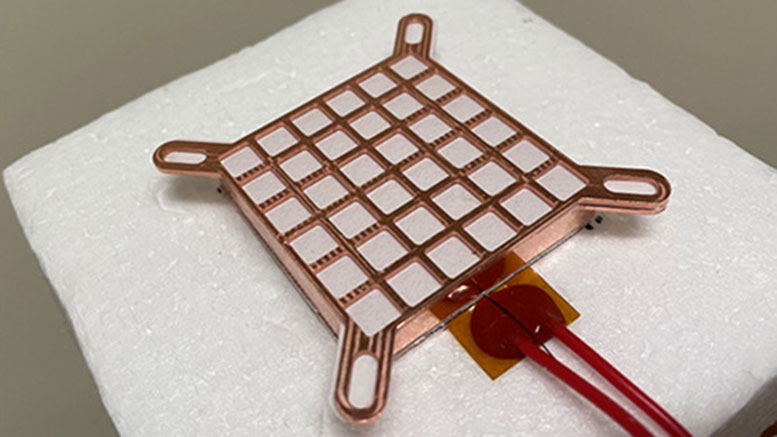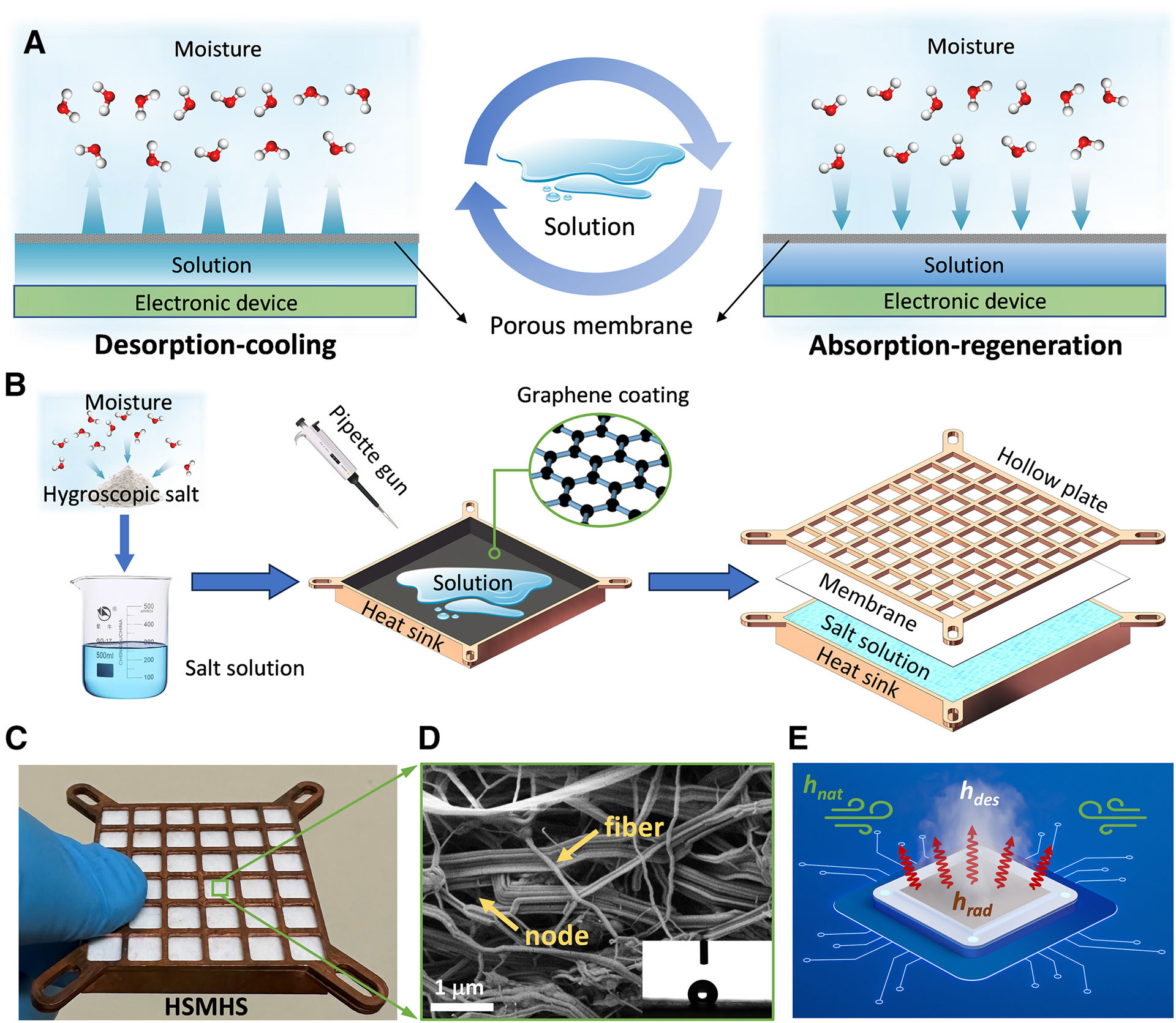Passive Salt Water Cooling Boosts CPU Performance by Almost 33%
And absorbs moisture from the air to refill its cooling capacity

A recently published scientific research paper boasts of the “outstanding performance” of a new passive thermal management system that can boost CPU performance by up to 32.65% via saltwater cooling. The system is self-refilling, too: it can recharge its cooling capacity by absorbing moisture from the air.
Called a "hygroscopic salt-loaded membrane-encapsulated heat sink" (HSMHS), the system utilizes a lithium bromide salt confined by a porous membrane which allows water to evaporate. According to the researchers from City University Hong Kong and the School of Energy and Power Engineering, Huazhong University of Science and Technology, Wuhan, a test computer system delivered 32.65% better performance using this new salt-based passive cooling technology.
Cooling processors, and, on a grander scale, buildings like data centers, can be a significant cost for both businesses and the environment. Passive cooling technologies are inherently attractive because they have no moving parts and require no direct power. However, the currently available passive coolers often get heat-saturated quickly, which causes system performance to drop off (e.g. thermal throttling).



The key appeal of the new lithium bromide salt-based HSMHS is that it can usefully cool a system for 10 times longer than state-of-the-art alternatives like metal-organic frameworks (MOFs) and hydrogels (a phase change material, or PCM). Over this time period, users can expect better performance — and the benefit was measured at almost a third better performance, during this research.
So, how does the new hygroscopic salt-loaded membrane-encapsulated heat sink work? The scientists crafted a standard-looking heatsink and placed a lithium bromide solution onto it, held in a porous membrane material, which allows water vapor to pass through it. A cooling action occurs due to the desorption process of the salt solution, releasing water vapor into the surrounding atmosphere through the porous membrane.
The results of the testing of the above HSMHS were that the computer processor could run at below 64 degrees Celsius for about 400 minutes (over six and a half hours). This result is said to be 10x better than the MOF alternative.
During off or idle hours the HSMHS can recharge its cooling capacity by absorbing moisture from the air. In some of the diagrams, you will see comparisons to an ‘HSHS,’ which is a similar passive cooler but performs less ably due to the lack of the membrane layer.
Get Tom's Hardware's best news and in-depth reviews, straight to your inbox.
Another appealing feature of the new HSMHS is that it is claimed to be very cost-effective. Lithium bromide salts are cheap, it is said, and compared to something like the aforementioned chromium-based MOF, the HSMHS is about 1,000 times more cost-effective.
It will be interesting to see if we hear much more about this passive cooling technology development and adoption in the coming months. The scientists aren’t just looking at cooling computer processors with it, they also see it being useful in solar cells, buildings, and batteries.

Mark Tyson is a news editor at Tom's Hardware. He enjoys covering the full breadth of PC tech; from business and semiconductor design to products approaching the edge of reason.
-
hotaru251 "The system is self-refilling, too: it can recharge its cooling capacity by absorbing moisture from the air."Reply
I do wonder how humid a place needs to be for that to occur as would for sure rule out very dry places like middle east i assume. -
helper800 Reply
I would be more worried about the potential corrosion rather than the shorts. Most electronics nowadays are pretty resilient to shorts, corrosion on the other hand is very hard on anything electronic.Stevemeister said:Any type of cooling system leak with salt water and Pzzzfffttt -
Stevemeister Reply
Pretty humid and not too hot - even in the Caribbean Islands you can find salt drying bedshotaru251 said:"The system is self-refilling, too: it can recharge its cooling capacity by absorbing moisture from the air."
I do wonder how humid a place needs to be for that to occur as would for sure rule out very dry places like middle east i assume. -
Order 66 Reply
My first thought was the potential corrosion as well. I couldn't imagine using this to fully cool the CPU and GPU in a system, having it leak and kill them both.helper800 said:I would be more worried about the potential corrosion rather than the shorts. Most electronics nowadays are pretty resilient to shorts, corrosion on the other hand is very hard on anything electronic. -
Zforgetaboutit I'm suspicious of the high precision 32.65% claim. Why not 32%, or the even more honest 30%?Reply -
Eximo Scientific results, the precision of their measurements.Reply
I would not think leaks would be all that possible given the design. Essentially a membrane for water vapor to pass through, energetic water molecules. Surface tension plus the absorption of the salt should prevent liquid water from getting past the membrane.
The major sticking point is they are not talking 24/7 operation. They specifically give it a timeline, though they didn't provide the heat load itself, so don't be thinking desktop or laptop levels of power, probably a tiny heat source. So they rely on rest periods for the salt to reabsorb moisture.
Conceivably you could hook this up to a simple water supply, but at that point there are surely better options. (That or you need two chips/coolers, one to run and produce the moist air, and the other to absorb it while idle)
Or my silly solution, drippings off of a Peltier device. -
Lithium Bromide is very corrosive. We used such machines on our submarines to keep things cool. Not at all pleasant if the plant should spring a leak. I can't see any consumer level device using it to have much of a lifespan.Reply
-
deesider Seems like it could be an excellent option for passive air-conditioning of a building - which generally only needs to be cooled during the daytime hours. The evaporative cooler on the roof could connect to the air-con system and would recharge with water overnight.Reply
For data centres it would only make sense if they were in use only 30% of the time - which doesn't seem likely?